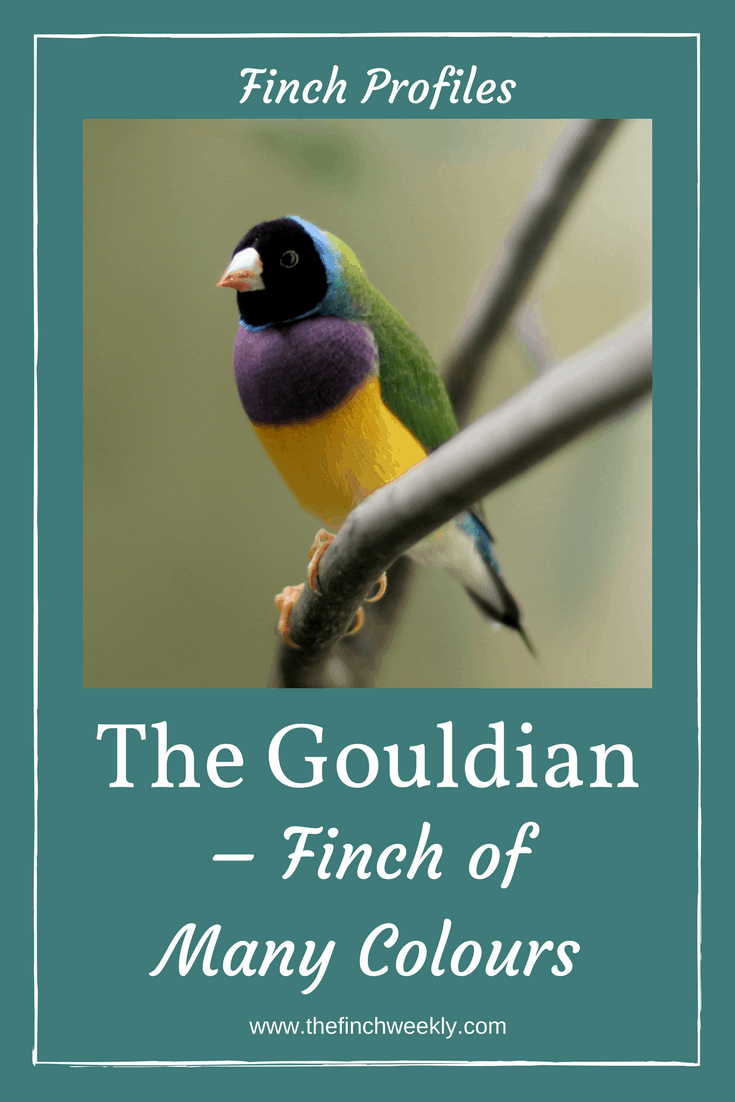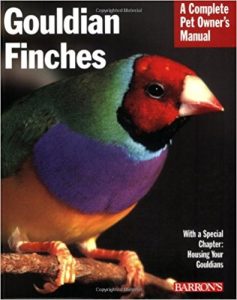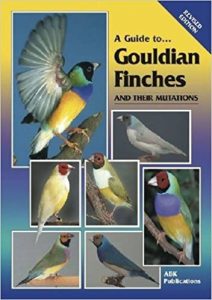While every finch, no matter how muted or plain its colours, is beautiful to us finch fanatics, one that catches the eye of non-bird keepers is always the Gouldian Finch. With its bright colours and cute features, it earns its alternative name of the Rainbow Finch. And it comes in so many different colour variations that each description takes two or three parts.
Just to let you know this post contains an affiliate link or two, which means that if you click on one of the product links, I’ll receive a commission payment. It doesn’t cost you anything extra though!
About the Gouldian
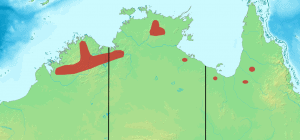
Gouldians have seen dramatic loss of numbers in the wild due to reduction or alteration of their habitat as well as their natural colouration making them most susceptible to predators. Unfortunately, capture for the pet bird trade was also a big factor in their decline, though a ban on wild exports has been in place since 1959 to curb this.
Gouldian basics
Gouldians are generally one of the easier finches to sex as the male’s colours will be brighter than those of the female. The face mask can be larger and clearer on males than females while the males also have a gentle warbling song. Indication of breeding condition is also easy with female Gouldians as the beak changes from white to black when she is ready to breed while the male will gain a red tip to his beak.
In the wild, Gouldians enjoy half-ripe grass seeds such as sorghum or spinifex grass seeds in the wet season. In captivity, they have shown a love of large white millets as part of a foreign finch mixture and millet spray also. Some people find them cautious to try new foods so mixing with seeds they do eat is a good way of persuading them to try. They may enjoy green foods, depending on the bird and have a high need for calcium from crushed oyster shells, egg shells or iodine blocks. If they don’t get sufficient iodine, they can suffer with baldness on the head when feathers don’t regrow.
Gouldians generally live well in colonies and also with other birds. In terms of relatives, they are a part of the Parrotfinch family so can hybridize with any of the Parrotfinch species.
Breeding
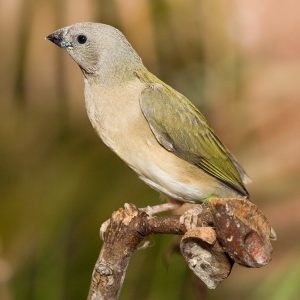
At one time, it was said that they needed a great deal of heat to be able to breed outside in the UK but nowadays, they are classed as a fully domesticated species and most don’t need these extremes. They will need heat during the winter as they are finely feathered and will not survive winter without extra help.
Nest boxes will often be used with nesting materials added to them by the male then arranged into place by the female. The average clutch of eggs is five to eight and incubation lasts for 13-14 days. The chicks are bare when born without any fuzz and are distinctive due to their light-reflecting nodes at the corners of the mouth. Parents will take turns to brood the young and after 10-14 days, the female will start to sleep outside the nest along with the male. Chicks fledge at 22-24 days at which time they will often roost out of the nest with their parents or return with them if the parents return. They are fed by their parents for another 2-3 weeks.
Getting adult plumage takes longer with Gouldians than many other finches and this is part of the reason they are often more expensive than some species. It can take as long as nine months to get full adult colouration, though the average is 4-6 months.
Health issues
Gouldians are known to be susceptible to air sac mites, a highly contagious parasite that affects the respiratory system and can result in death. Its symptoms include lethargy and difficult breathing as well as a clicking sound made when a breath is taken. There are treatments available including Ivermectin and a product called Scatt where a drop is placed on bare skin to kill the mites.
Colours of the Gouldian
These little rainbow finches do come in most of the colours of the rainbow and many variations of colours. There are three main elements used to describe each bird – head colour, breast colour and back colour. So the picture here, the bird would classified as a red head (RH), purple breast (PB) and green back (GB).
Head colours
The red head is one of the three naturally occurring head colours and is a sex linked dominant mutation that can be both single and double factor in the male. Females need to inherit just one gene from their father to have a red head.
Black head is another natural mutation and is a sex linked recessive trait. This means males can be bot single and double factor and can be split for BH while females are only ever single factor and cannot be split for BH.
Yellow head is the third natural mutation and is an autosomal recessive trait that requires one red head gene to be present to appear. If there are two yellow head genes with no red head genes, the bird ends up with a black head and a yellow tipped beak (YTB).
Breast colour
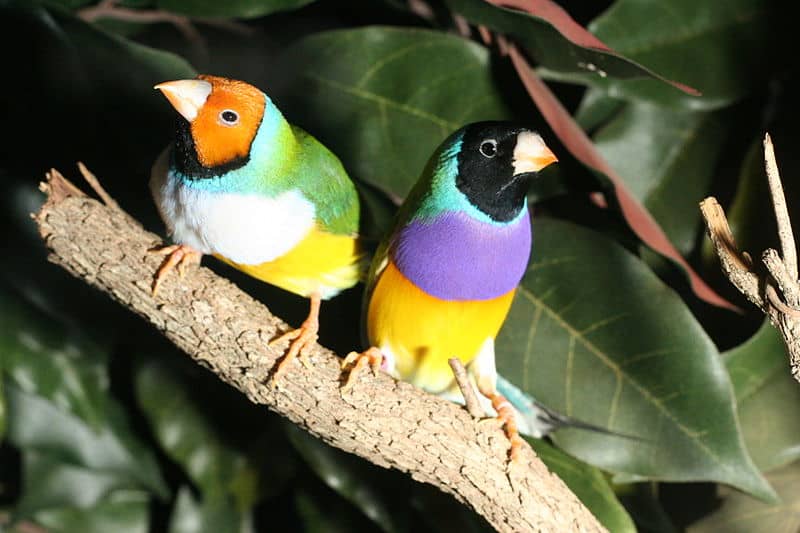
Lilac breast is an autosomal trait that is dominant to white breast but recessive to purple. To be a lilac breast, the bird can be either double factor for lilac or split for lilac and white, then favouring the lilac breast. If it has one purple and one lilac breast, it will be purple and split for lilac.
White breast is autosomal and recessive to both the other colours meaning both sexes can be double factor and appear white or be single factor and be split for white while appearing one of the other colours.
Body colour
Body colour is the most complicated of the elements of the Gouldians colours because there are four of them and each can be affected by other genes within the bird. Green body is sex linked and is called incomplete dominant, as is yellow body. Both are dominant to blue but can be co-dominant to each other. Dilute is a combination of green and yellow in purple breasted birds and only comes in male birds. The end result is a bird that is neither green nor yellow but somewhere in between because neither body colour is completely dominant to the other. The final colour is blue, which is an autosomal recessive gene so birds will only be blue when the have a single green sex chromosome and are double factor for the gene that will make them blue.
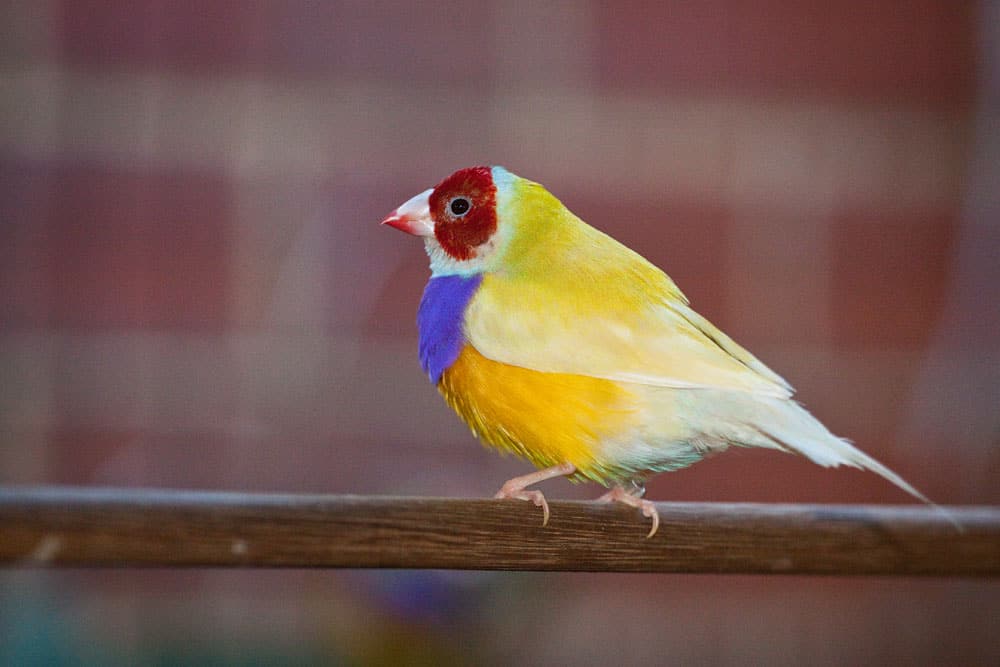
For some really good diagrams on all of this, check out http://www.finchinfo.com/genetics/lady_gouldian_finch/body_colors.php
Another helpful tool is the genetics calculator that allows breeders to check what possible outcomes would come from a pairing.
Further reading:
